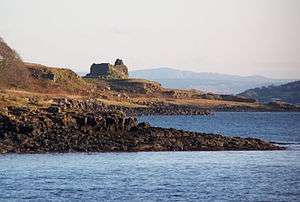Treaty of Westminster (1462)

The Treaty of Westminster (or the Treaty of Westminster-Ardtornish) was signed on 13 February 1462 between Edward IV of England of the House of York and the Scottish Lord of the Isles, John of Islay, Earl of Ross, Lord of the Isles. The agreement proposed that if Scotland was conquered by England, the lands beyond the Scottish sea - beyond the Firth of Forth - would be divided between the Lord of the Isles and the Earl of Douglas to be held from the crown of England, and the Earl of Douglas would hold Scotland south of the Firth.
Background
The Scottish crown in the minority of James III of Scotland had taken the Lancastrian part in the Wars of the Roses by welcoming the fugitive Henry VI of England. Edward IV was forming an alliance with these disaffected nobles to reduce the threat posed by the exiled former king, now in the hands of James III's mother Mary of Guelders.
Process
The Earl of Douglas and his brother John Douglas of Balvenie made their way to the west of Scotland with Edward IV's proposals. The highlands lords gave their assent from Ardtornish Castle on 19 October 1461, and sent Ranald of the Isles and Duncan, Archdeacon of the Isles, as their envoys to London. The articles were finalised and sealed at Westminster Palace on 13 February 1462 and signed by Edward IV on 17 March 1462. John, Earl of Ross, Donald Balagh, and his son and heir John, with all the people of the Ross and the isles would become subjects of Edward IV on Whitsunday[1]
Consequences
The historian Norman Macdougall thought that the significance of the agreement was overplayed by earlier historians, such as Andrew Lang, who described it as an attempt to "stab Scotland in the back with a Celtic dirk." Its consequence was an attack by the Earl of Ross on crown lands near Inverness in 1462 and 1463.[2]
The Scotland crown allied with Edward IV by the treaty of York in 1464. The 1462 agreement was used against the John, Earl of Ross and Lord of the Isles in 1475 when he was summoned for treasons including making leagues and bands with Edward IV and the banished Earl of Douglas.[3]
The Douglases and England
It is notable that Archibald Douglas, 5th Earl of Angus was to play a significant role in the future Treaty of Perpetual Peace (1502) and its offspring, the Treaty of Greenwich. The Douglases were generally at that time, the heads of the pro-English party in Scotland, pushing for what eventually became a Union of the Crowns and Kingdom of Great Britain.
See also
External links
- Timeline for Scotland during the 1400s
- Landscapes of Scotland
- Rymer, Thomas, Foedera, conventiones, literae,... inter Reges Angliae et alios, vol. 5 part 1 & 2, Johannes Neaulm, Hague, (1741) (Latin), (material from Foedera, vol.11 & 12 (1710-1)), in part 1; p. 107-9
- Lang, Andrew, A History of Scotland from the Roman Occupation, vol. 1, Blackwood, Edinburgh (1900), pp. 336–7.
References
- ↑ Foedera, vol.5 part1, Hague (1741), p.107-109 see external links
- ↑ Macdougall, James III, John Donald (1982), p.59, citing Lang, Andrew, History of Scotland vol.1, (1900), p.336
- ↑ Macdougall, Norman, James III, (1982), p.121: J. & R. Munro ed., Acts of the Lords of the Isles, (SHS, Edinburgh 1986), pp. lxx-lxxii